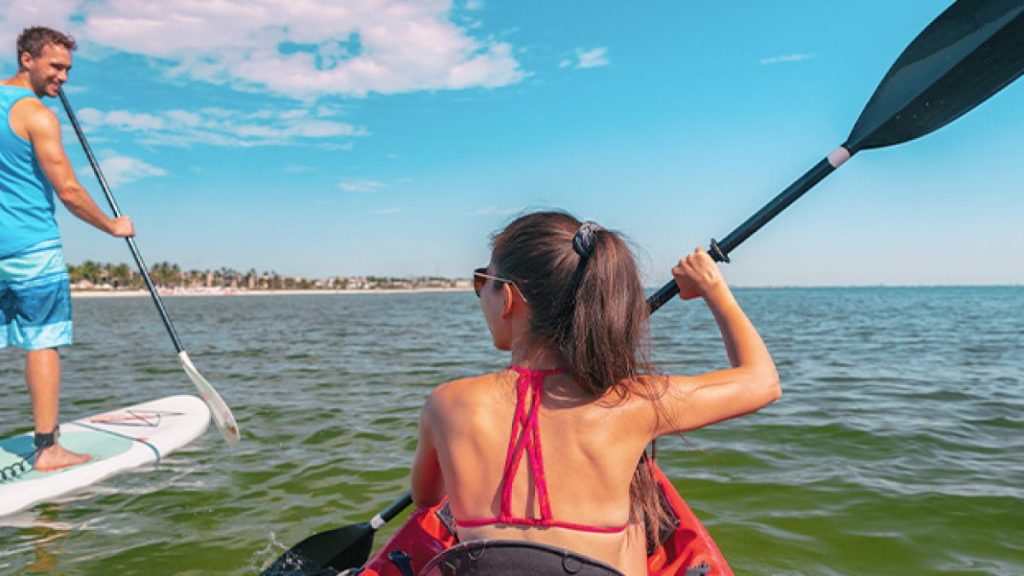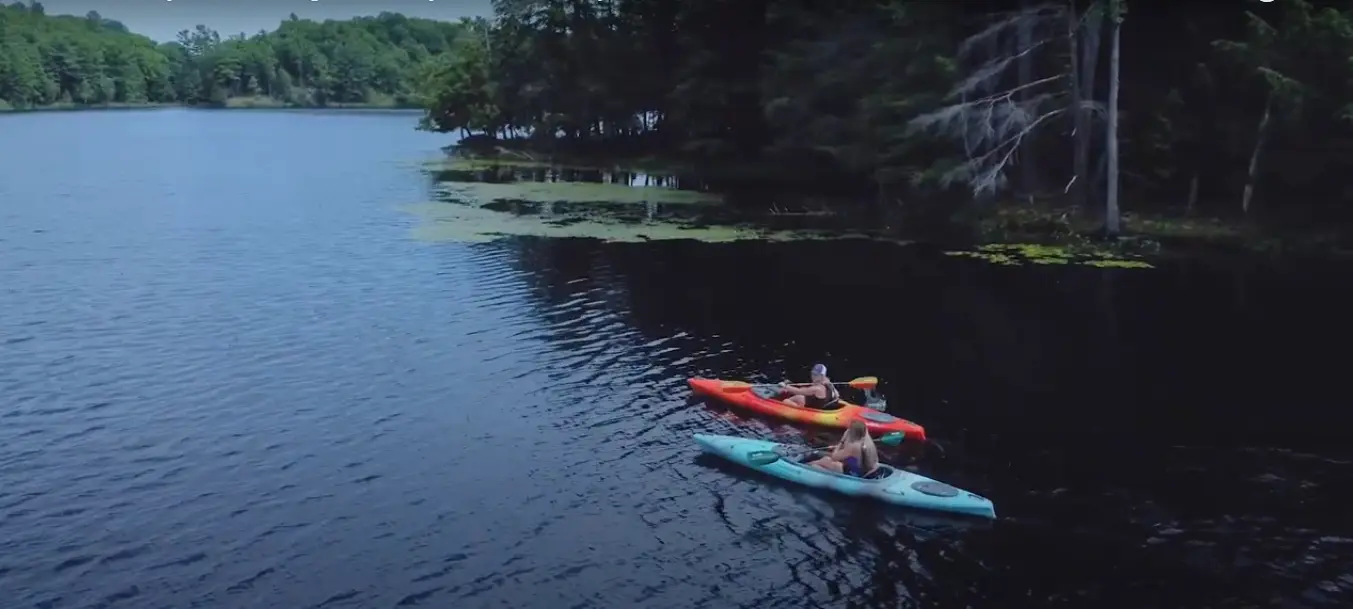Kayaking is an exhilarating water sport enjoyed by many across the globe. Yet, the query “Is it hard to kayak?” remains a common concern for novices. This comprehensive article aims to address various facets of kayaking, delving into the difficulty levels, necessary equipment, safety measures, and more.
Introduction to Kayaking
Kayaking traces its roots to the Inuit and Aleut tribes of the Arctic North America over 4,000 years ago. Today, it’s a popular sport and recreational activity. Kayaking can be enjoyed on different types of water bodies, from serene lakes to raging rivers.
Basics of Kayaking
- Kayak: A small, narrow watercraft propelled by a double-bladed paddle.
- Paddling: The act of moving the kayak using the paddle.
- Types: Various types, including sit-on-top, recreational, touring, and whitewater kayaks.
Types of Kayaking

Recreational Kayaking
- Waters: Mostly done on calm lakes or slow-moving rivers.
- Difficulty: Ideal for beginners; focuses on enjoyment rather than speed or technique.
- Experience: Often characterized by leisurely paddling, photography, and wildlife observation.
Sea Kayaking
- Waters: Open oceans or large bodies of water.
- Difficulty: Requires navigation skills, strength, and understanding of tides and weather.
- Experience: Provides an opportunity to explore coastal areas, islands, and marine life.
Whitewater Kayaking
- Waters: Fast-flowing rivers with rapids and obstacles.
- Difficulty: Demands high skill level, understanding of hydraulics, and ability to perform rescues.
- Experience: Thrilling, adrenaline-pumping, and requires precise control and agility.
Skills and Training
Beginner Level
- Essentials: Basic strokes, balance, and safety rules.
- Training: Many facilities offer introductory courses or guided tours.
- Progression: Consistent practice helps build confidence and ability.
Intermediate and Advanced Levels
- Skills Required: Eddying, ferrying, rolling, bracing, and rescue techniques.
- Training: Advanced courses, clinics, and participation in kayaking groups.
- Progression: Practice in various conditions, participation in races, or undertaking long expeditions.
Equipment and Gear
Essential Equipment
- Kayak: Chosen based on the type of kayaking; varies in size, weight, and design.
- Paddle: Should be the right length and weight for the paddler.
- Life Jacket: Must be properly fitted; essential for safety.
- Helmet: Mandatory for whitewater kayaking; protects the head.
Optional Accessories
- Spray Skirt: Keeps water out of the cockpit.
- Dry Bag: Protects personal belongings from water.
- Footwear: Specialized shoes for grip and protection.
Physical Fitness and Health Benefits
- Strength Building: Engages upper body, core, and even legs.
- Cardiovascular Fitness: Provides a good aerobic workout.
- Flexibility: Encourages flexible movement of shoulders and torso.
- Mental Health: Being on water can be calming and meditative.
Safety Considerations
Before You Start
- Weather Check: Be aware of weather conditions.
- Plan: Inform someone about your itinerary.
- Gear Check: Ensure everything is in good condition.
While Kayaking
- Navigation: Know the route and potential hazards.
- Distance: Keep a safe distance from other vessels.
- Respect Nature: Understand local wildlife and practice “Leave No Trace” principles.
Common Questions and Answers
- Is it hard to kayak?
- For most people, basic kayaking is not hard and can be learned quickly.
- What if I tip over?
- Learning basic rescue techniques can help; always kayak with a buddy when starting.
- Can children kayak?
- With appropriate supervision and gear, children can enjoy kayaking.
- What about kayaking with disabilities?
- Adaptive equipment and programs are available for individuals with disabilities.
Conclusion
So, is it hard to kayak? The answer largely depends on the type of kayaking and the individual’s preparedness. With appropriate training, equipment, and safety considerations, kayaking is an accessible and enjoyable sport for many. Its versatility, from peaceful paddling on a placid lake to navigating thrilling whitewater rapids, makes kayaking appealing to a wide range of enthusiasts. If you’re considering kayaking, starting with a guided tour or lessons from a professional can lead to a fulfilling and safe experience. Whether for recreation, fitness, or adventure, kayaking has something to offer everyone.
Read More about Kayaks:
- What to Wear for Kayaking in Summer
- How to Store a Kayak in the Garage
- What is a Skeg on a Kayak
- What is a Tandem Kayak
- How to Build a Homemade Kayak Launch
- How to Get in a Kayak
- What to Wear for Kayaking?
- How to Transport a Kayak Without a Roof Rack?
- How to Build a Kayak Rack for an RV?
- Are Inflatable Kayaks Safe?
- How to Build a Rack for Kayaks?
- Do Kayaks Have a Weight Limit?
- Wilderness Systems Pungo 120 Kayak Review
- How to Lock a Kayak?
- Where to Kayak with Manatees?

Hi, I’m Steve, the passionate kayaking enthusiast behind Outdoor Bravo. As an avid adventurer and nature lover, kayaking has been a central part of my life for as long as I can remember. My love affair with the water began during my childhood, and it has only grown stronger over the years. From serene lakes to rushing rivers and even challenging ocean tides, I’ve navigated various water bodies, seeking new thrills and unforgettable experiences.
